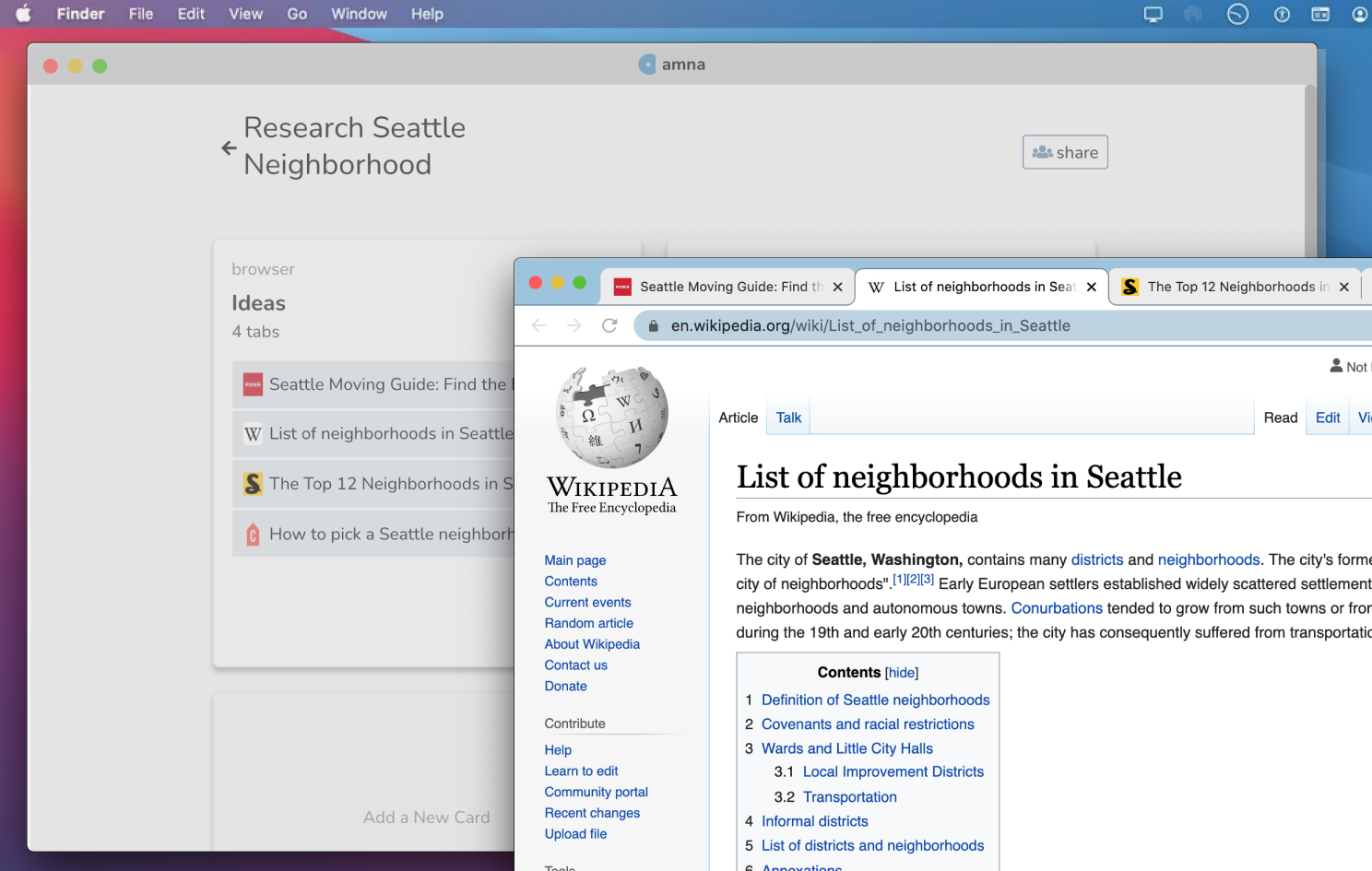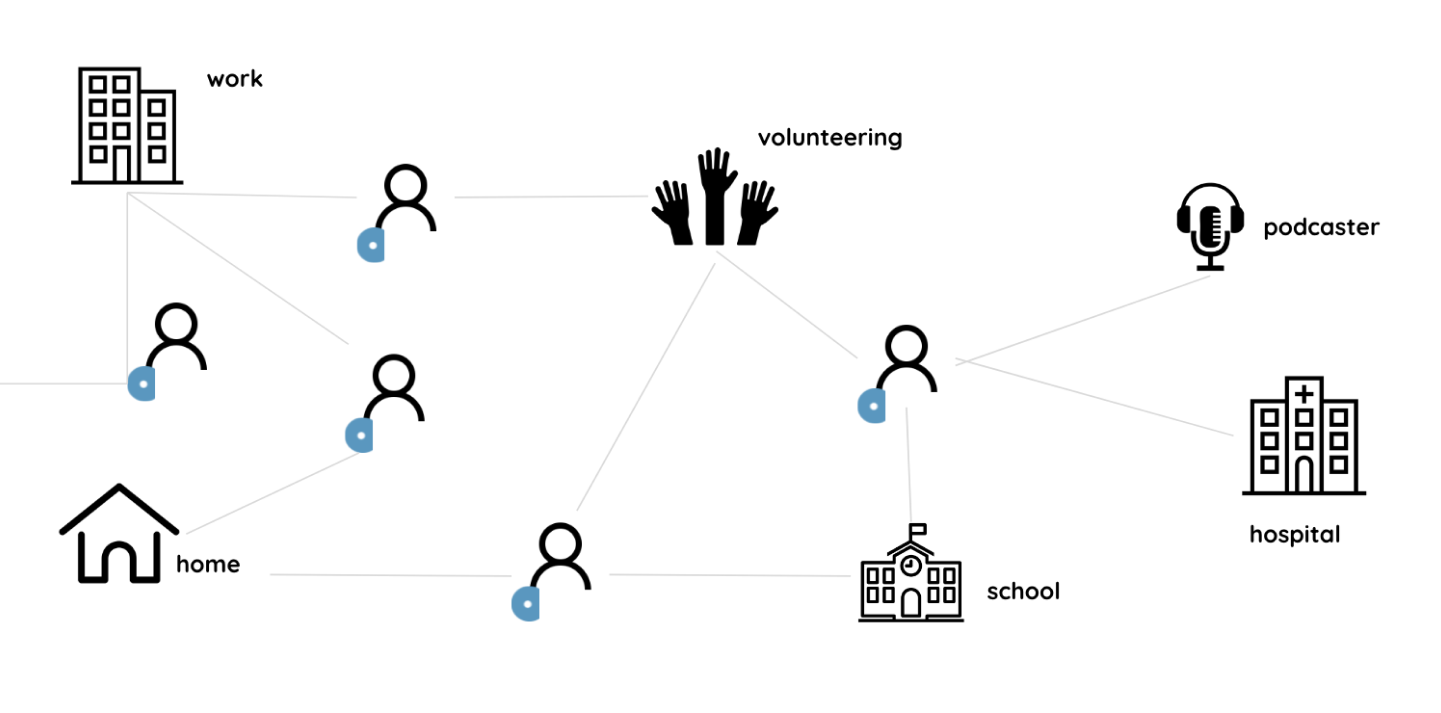This is the post where you finally learn about Amna, and how it fits into our context-centric future.
If you’ve been following along, I stated two things in the last posts in the series:
- Apps have too much going on. We use them in multiple contexts
- Context holds apps together. To figure out context, you need a lot of data
However item #2 is not true. Here’s something fresh, you actually don’t need data to figure out context. That’s a backwards approach.
The Information Bridge
More often than not, humans know context before they actually work.
When people accquire information, it happens in one of three ways:
-
Randomly “stumble” upon things (e.g browsing)
-
Actively seek information as part of something they want to accomplish
-
When doing somehting else, realize that a piece of information is related to some other item
Unless your mindlessly browsing, most knowledge accquisition happens as a result of #2 and #3. That means, you already know the context for what you’re looking for!
So instead of using advanced algorithms to “guess” context, what if we tweaked interfaces to capture context from people. Let’s make context entry so simple, and so easy to navigate, that there is no guess work.
Meet Amna
Amna (for now) is an app that sits on your desktop. It manages your browsing and separates it by context.
Why browsing?
Most people get a lot of work done in the browser. It's a good place to start because the browser spans multiple contexts. Design. Research. Writing.
Instead of calling them contexts, Amna uses tasks to represents contexts. A to-do list interface.

Tasks in Amna are areas to capture infromation
Why a To-Do List?
Spaces and folders are are often unopinonated. They are way easier to create, and hoard items into time and forget.
Tasks in a way are opinionated. When written well, they have outcomes and objectives. People are incentivized to get rid of tasks. They want to naturally complete them. That means your workspace naturally cleans itself.
Tasks are inherently tied with time. The top of mind ones filter to the top. So tasks are like this non real-world way to organize items. Which in any other place could get overwhelming.
It's not easy
Most people want to use Amna as spaces to just collect items like an Evernote or Pinterest. We often don't think of tasks as a way to organize
Amna is as an extension of everything in your head. It is like a remote that brings everything to life in the digital world.
There are also a few more deeper constructs of headspaces, collections, and a calendar view for more organization.
Context first
Amna automatically saves your tabs as part of a context.
It means that when reviewing a document, you come back exactly to where it was. If you get distracted, you know exactly what your focus is. When you lose things, you don’t need to tag them to find them.
Your context is the center of your work.
Behavior Change
Amna challenges your existing behavior. Instead of accessing information first, it tells you to take a step back, and state your task before you go do it.
And I know that working in a context-first way. Amna changes a few things:
- Too many Tabs - Normally, one browser has too much going on. Amna scopes information to the context it is in.
- Focus - Stating your intention first makes you less susceptible to distractions.
- Organization - In a context-first world, you don’t need to worry about where things live, it’s defined upfront
- Search - You can simply search for a meeting, or something you worked on, to get everything you want.
Works-In-Progress
The amna app and workflow are far from perfect. I flip back to my old habits when I'm under a fast time crunch because creating tasks takes time. But for the 80% of the time, when I am not in a crunch, I reap the benefits of focus, rapid context-switch and staying organized.
An Aware Interface
I chose the name Amna because I read that it meant caring. That’s what we need more of from the future of tech.
Adding a new dimension to computers, of why information is important to us, makes them more aware. There are a few design descions in Amna.
What Changes?
One day, I believe that we can turn our attention economy of today to become more of an action economy. Where we’re incentivized to help people accomplish their true work.
Digital Wallet for Actions
We constantly get action items from everywhere aspect in our lives. Amna can seamlessly sitches together your life with all of the different things you have going on using action items

an amna for everyone is shared a
If everyone had Amna, it would create a network to exchange and seamlessly transfer work.
Service Discovery
It’s hard to discover apps. Even Apple has a problem with it
In a world of AI, and more services, how would you ever know that something can make your life easier? There are amazing services today that transcribe notes, SEO optimize posts, and automatically fill tedious forms.

One way we can introduce services
We believe Amna, without disrupting you, can enable you to try new things in the flow.
Power to the Consumer
The biggest concern with Amna and any context-aware technology is going to be privacy.
So from the ground up, Amna was designed to be local-first. It works on local hardware, and doesn’t use the cloud unless it really has to.

Amna manages user intentions. While services focus on the jobs to be done
Over-time, we believe that Amna will pave a path to a more hybrid way of handling user information alongside service data. There might be a world where we don’t need user management.
How Can I Help?
I want to see if a context-first interface works. You should try it.
Here are a few things you can do to help see that vision through.
-
Use Amna (like a to-do list) - See if you can take a step back, and use Amna to run your week. Can you use Amna to execute on your tasks?
-
Share it - I’m only good at a few things. Marketing is not one of them. If you think Amna is promising, give it a boost in your network.
-
Community - I’ll pair you with an existing Amna user, from a similar background, and they can show you around. Write back if that’s interesting.
I still haven’t decided if I want to open-source my work or not. A question for later.
Feel free to write to me with any questions, comments and thoughts. Ravi
Draft Post
This post is draft mode. You will need to provide a password to read it.
